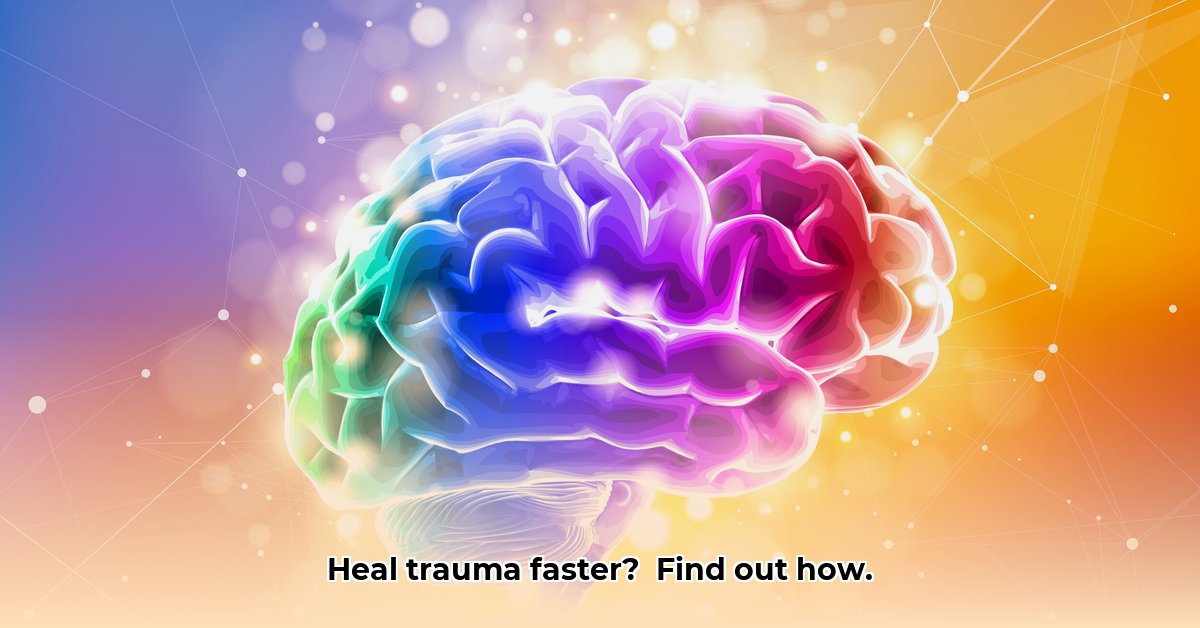
How Brainspotting Works: Finding Your Spots
Brainspotting sounds like something from a science fiction movie, but it's a therapeutic approach gaining popularity. Instead of spending hours talking about your past, it helps you heal from trauma by focusing on your body and gaze. It's a gentle, guided way to untangle emotional pain, helping you to move forward. But how does it actually work?
Imagine your brain as a complex network – some pathways might be blocked by difficult emotions from past trauma. Brainspotting helps identify these "brainspots" – specific points in your visual field connected to those tough feelings – and gently guides you in processing them. You don't relive the trauma; instead, you focus on physical sensations – tension in your shoulders, tightness in your chest, etc. – while subtly moving your eyes, guided by your therapist. It's a surprisingly simple yet potentially effective technique, helping your brain naturally process difficult emotions.
It's not about dredging up every painful memory, but rather easing their emotional intensity. Through this gentle process, your body may release trapped energy and begin healing. It's a deeply personal experience, unique to each individual.
The Science Behind the Spots: A Look Under the Hood
The theoretical basis is rooted in neurobiology. The idea is that "brainspots" represent neural pathways linked to past trauma. By gently directing your gaze, these pathways are activated, allowing your brain to start its natural healing process. Think of it as a gentle nudge, encouraging your brain to process and release emotional burdens. However, it's important to note that the exact mechanisms are still being understood – this is a developing field. While some believe it accesses specific brain areas involved in trauma processing, others suggest it enhances self-awareness and emotional regulation. The effectiveness might depend partly on individual responses to therapy. It’s not all clear-cut yet.
The Evidence: A Balanced Perspective
Let's address the elephant in the room: scientific evidence. While Dr. David Grand, Brainspotting's developer, and others have done initial research, larger-scale studies are still needed to definitively prove its effectiveness. Current research is limited, so we can't definitively say it's better or worse than similar treatments like EMDR. While many therapists and clients report positive experiences, more robust scientific validation is necessary. Anecdotal evidence, whilst encouraging, is not a substitute for solid scientific backing. This is a point worth emphasising.
Does this mean it's ineffective? Absolutely not; this simply highlights the need for further research.
What to Expect from Brain Spotting: A Journey, Not a Sprint
Brainspotting is not a quick fix; it's a healing process, a journey, not a sprint. You'll work closely with a trained therapist to identify brainspots and gently process related emotions and physical sensations. Don’t expect immediate results—this is a gradual, step-by-step approach. The pace is tailored to you.
Benefits and Potential Limitations: Weighing the Pros and Cons
Brainspotting offers potential benefits and limitations, like any therapy.
Potential Benefits:
- Some report faster trauma symptom relief.
- The focus on the body (somatic approach) tackles both emotional and physical trauma impacts.
- It can be gentle and suitable for those overwhelmed by traditional talk therapies.
Potential Limitations:
- Extensive research is still needed to fully establish its efficacy.
- It may not be suitable for everyone or all trauma types.
- Finding a properly trained practitioner is essential.
Finding the Right Therapist: Your Partner in Healing
Finding a certified Brainspotting therapist is crucial. Look for someone with proper training and experience. A skilled practitioner will create a supportive and safe environment, guiding you through any challenges. Take your time; a good therapeutic relationship is key.
The Future of Brain Spotting: A Bright Horizon
The field is constantly evolving, with ongoing research aiming to improve our understanding of its mechanisms, effectiveness, and potential applications. Further studies will help clarify its long-term effects and best uses. While it's relatively new, its potential is vast and promises more effective trauma treatment options.
Considering Brainspotting: Your Next Steps
Before starting, ask yourself:
- Am I ready to explore a new trauma approach?
- Am I comfortable focusing on physical sensations alongside emotions?
- Am I comfortable with a less talk-focused therapy?
Brainspotting can be powerful, but remember both its potential benefits and limitations. It's a personal choice, and it may not be for everyone. But for those who find it resonates, it offers a unique path to healing.
How to find a qualified Brainspotting therapist near you
Finding the right therapist is vital for a safe and potentially effective experience. Here's how:
- Check the Brainspotting website (https://brainspotting.com/) for a therapist directory.
- Verify their credentials: Check their training level (Phase 1, 2, etc.). More advanced training often indicates greater experience.
- Read Reviews: See what other clients have said about the therapist's competence and ability to create a safe environment.
- Schedule a consultation: Most therapists offer an initial consultation to discuss your needs and see if it's a good fit.
Key Takeaways
- Brainspotting shows promise but lacks extensive research.
- Finding a qualified practitioner is crucial for safety and potential effectiveness.
- Consider Brainspotting alongside other therapeutic approaches.
- Be an active participant in your therapy.